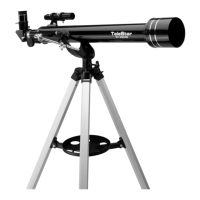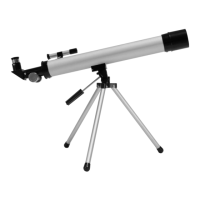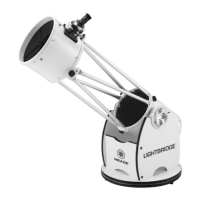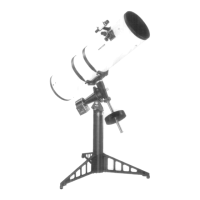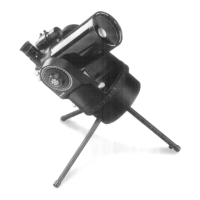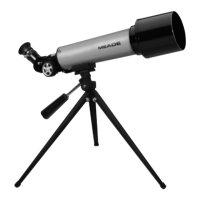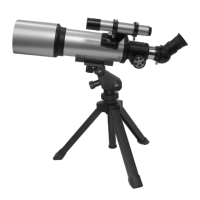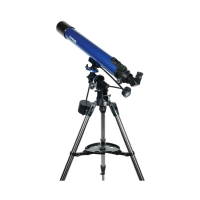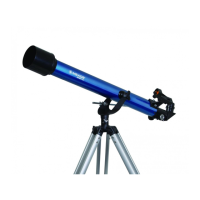Do you have a question about the Meade TELESTAR 60AZ-A2 and is the answer not in the manual?
The accessory tray stabilizes the tripod and holds eyepieces and other Meade accessories, offering convenience.
Connects the optical tube, which gathers light, to the mount for observation.
Covers picking targets, unlocking controls, using the viewfinder, focusing, and fine adjustment controls for observation.
Recommends observing the Moon as a first celestial target for new users, noting its features.
Details on observing Venus, its visibility, and phase changes due to its proximity to the Sun.
Information on observing Mars, its surface details, and polar caps when it is close to Earth.
Explains observing Jupiter, its visible bands, and the fascinating 'Galilean dance' of its moons.
Highlights Saturn's memorable ring structure as a key observation target.
Discusses observing stars, noting their colors can indicate age and temperature, and finding multiple star systems.
Focuses on identifying and observing double or binary stars that orbit each other.
Recommends using the 25mm low-power eyepiece first, then the 9mm for details, emphasizing proper power selection.
Defines objective lens diameter as the primary measure of a telescope's size and light-gathering capability.
Explains focal ratio's role in determining the photographic speed and exposure time of a telescope.
Describes the altazimuth mounting system, allowing movement up/down (altitude) and side-to-side (azimuth).
Details the formula: Telescope Focal Length / Eyepiece Focal Length = Magnification.
Offers advice on how to clean lenses carefully, emphasizing minimal intervention and proper materials.
Details the correct procedure and solution for removing fingerprints and organic matter from lenses.
The accessory tray stabilizes the tripod and holds eyepieces and other Meade accessories, offering convenience.
Connects the optical tube, which gathers light, to the mount for observation.
Covers picking targets, unlocking controls, using the viewfinder, focusing, and fine adjustment controls for observation.
Recommends observing the Moon as a first celestial target for new users, noting its features.
Details on observing Venus, its visibility, and phase changes due to its proximity to the Sun.
Information on observing Mars, its surface details, and polar caps when it is close to Earth.
Explains observing Jupiter, its visible bands, and the fascinating 'Galilean dance' of its moons.
Highlights Saturn's memorable ring structure as a key observation target.
Discusses observing stars, noting their colors can indicate age and temperature, and finding multiple star systems.
Focuses on identifying and observing double or binary stars that orbit each other.
Recommends using the 25mm low-power eyepiece first, then the 9mm for details, emphasizing proper power selection.
Defines objective lens diameter as the primary measure of a telescope's size and light-gathering capability.
Explains focal ratio's role in determining the photographic speed and exposure time of a telescope.
Describes the altazimuth mounting system, allowing movement up/down (altitude) and side-to-side (azimuth).
Details the formula: Telescope Focal Length / Eyepiece Focal Length = Magnification.
Offers advice on how to clean lenses carefully, emphasizing minimal intervention and proper materials.
Details the correct procedure and solution for removing fingerprints and organic matter from lenses.
| Optical Design | Refractor |
|---|---|
| Aperture | 60 mm |
| Focal Length | 700 mm |
| Mount Type | Altazimuth |
| Finderscope | 5x24 |
| Eyepieces Included | 4 mm |
| Magnification Range | 175x |
| Tripod | Aluminum |
